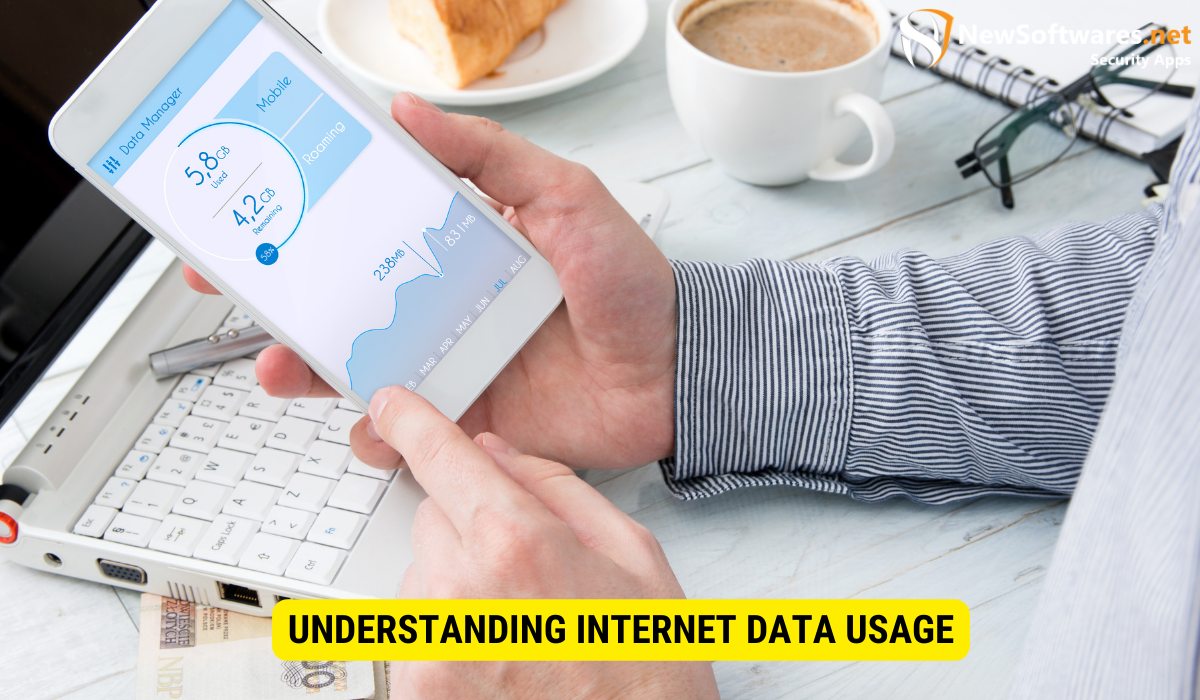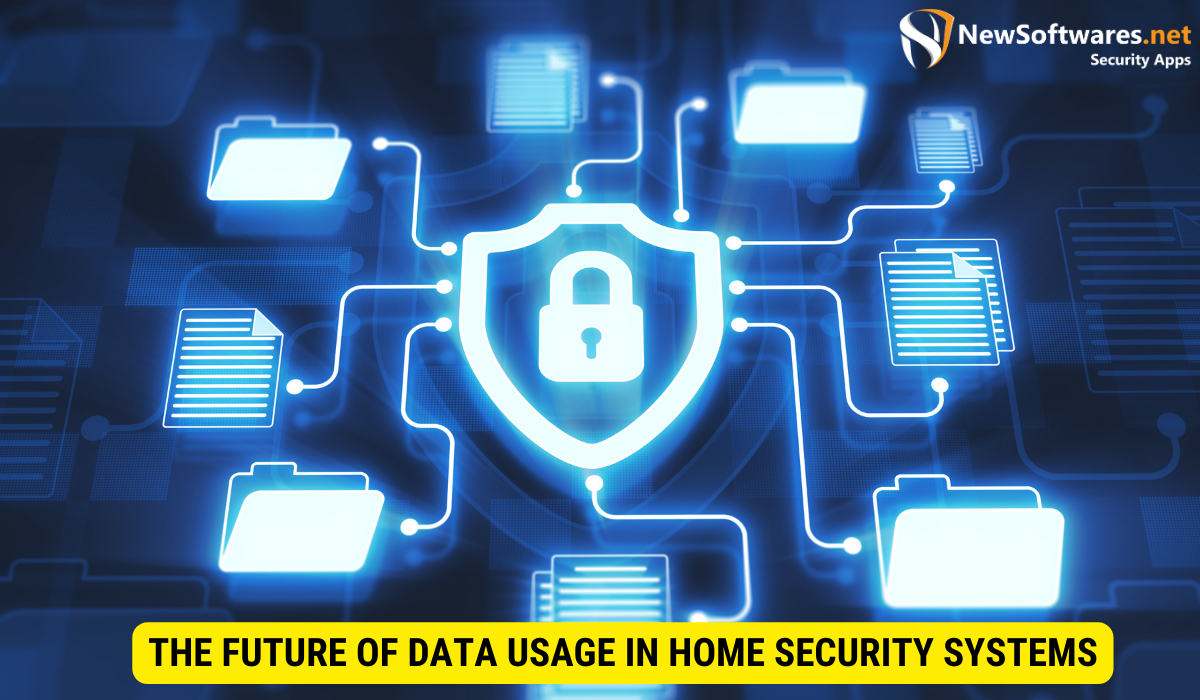Internet data usage is crucial for DIY home security systems, enabling real-time monitoring, data transmission, and system maintenance. Understanding data usage factors and optimizing settings is essential for efficient security and reliable operation.
As the popularity of do-it-yourself (DIY) home security systems continues to rise, it is important for homeowners to understand the various aspects of this technology. One crucial aspect is internet data usage. In this comprehensive guide, we will explore everything you need to know about how DIY home security systems utilize internet data and how you can optimize its usage for your own security needs.
Understanding Internet Data Usage

Before we dive into the specifics of DIY home security systems, let’s first understand what internet data usage actually refers to. Essentially, it is the amount of data that is transmitted over the internet from your security system to the designated monitoring center or your smartphone.
Internet data usage involves the transfer of information between your DIY home security system and external devices. This data can include live video feeds, motion detection alerts, system status updates, and more. The amount of data transferred depends on the features and capabilities of your particular security system.
Now, let’s take a closer look at how data is used in home security systems. Data is an integral part of DIY home security systems as it enables real-time monitoring and communication. When an event, such as a triggered alarm or detected motion, occurs in your home, the system captures the relevant data and sends it to the monitoring center or your smartphone.
This allows you to stay informed and take appropriate action, whether it’s contacting authorities or assessing the situation remotely. The data transmitted includes not only the specific event that triggered the system but also additional contextual information such as the time and date of the event, the location within your home where the event occurred, and any other relevant details that can help you understand the situation better.
For example, if a motion sensor is triggered in your living room, the system will capture a video clip of the event and send it along with the data to the monitoring center or your smartphone. This video clip can provide valuable visual information about the nature of the event, such as the number of intruders or any visible signs of forced entry.
In addition to real-time monitoring, data usage also plays a crucial role in system maintenance and performance optimization. Security system providers often collect anonymized data from their users to analyze trends and identify potential areas for improvement. This data can help them enhance the overall functionality and reliability of their systems, ensuring that you have the best possible experience.
Furthermore, data usage in home security systems extends beyond just the transmission of information. It also includes the storage and retrieval of data. Many DIY home security systems offer cloud storage options, allowing you to access and review past events and recordings. This can be particularly useful for reviewing footage in case of a break-in or other security incidents.
In conclusion, internet data usage in DIY home security systems is a vital aspect that enables real-time monitoring, communication, system maintenance, and storage of crucial information. Understanding how data is used in these systems can help you make informed decisions when choosing a security system that meets your specific needs and requirements.
The Role of Internet in DIY Home Security Systems
Now that we have a basic understanding of internet data usage, let’s explore the importance of internet connectivity in DIY home security systems.
The Importance of Internet Connectivity
Internet connectivity is crucial for DIY home security systems as it enables seamless communication between your security devices and external devices. Without a stable internet connection, your security system may not function optimally, and you may experience delays or interruptions in receiving alerts or accessing live feeds. Therefore, it is essential to ensure a reliable internet connection for your DIY home security system to operate effectively.
Data Transmission in Security Systems
When it comes to data transmission in DIY home security systems, efficiency and reliability are key. Security systems use various methods to transmit data, including Wi-Fi, cellular networks, or a combination of both. The choice depends on factors such as available infrastructure, signal strength, and your personal preference. It is essential to select a system that aligns with your internet capabilities and provides seamless data transmission.
Evaluating Data Usage of Different DIY Home Security Systems
Now that you understand the importance of internet connectivity, let’s delve into evaluating the data usage of different DIY home security systems.
Factors Affecting Data Usage
Several factors determine the data usage of DIY home security systems. These include the number of security devices, the level of video quality, the frequency of system checks, and the type of notifications you receive. Each of these factors affects the amount of data transmitted over the internet. It is crucial to consider these factors when selecting a DIY home security system to ensure it aligns with your desired level of data consumption.
Comparing Data Usage of Popular Systems
To make an informed decision about which DIY home security system is best for you, it is essential to compare the data usage of popular systems. By researching and analyzing the data usage specifications provided by different manufacturers, you can gain valuable insights into the system’s requirements and determine if it suits your internet capabilities and preferences.
Optimizing Data Usage in Your DIY Home Security System
Now that you have a grasp of data usage considerations, let’s explore how you can optimize data usage in your DIY home security system.
Tips to Reduce Data Usage
If you’re concerned about data consumption or want to avoid potential internet bandwidth limitations, there are several strategies to reduce data usage in your DIY home security system. These include adjusting video quality settings, enabling motion-triggered recording, scheduling system checks during off-peak hours, and utilizing local storage options instead of cloud-based storage.
Balancing Security and Data Consumption
While optimizing data usage is important, it’s also crucial to strike a balance between security and data consumption. It’s essential to consider your security needs and prioritize features that contribute to your peace of mind, even if they result in slightly higher data usage. By understanding the trade-offs and finding the right balance, you can ensure that your DIY home security system offers both reliable protection and efficient data usage.
The Future of Data Usage in Home Security Systems

As technology continues to advance, the future of data usage in home security systems holds great potential.
Emerging Trends in Data Usage
One exciting trend in data usage is the integration of artificial intelligence and machine learning algorithms into DIY home security systems. These advancements allow security devices to analyze data locally, reducing the need for constant data transmission and minimizing bandwidth requirements. Additionally, the growing popularity of smart home devices and the Internet of Things (IoT) will further impact data usage in the home security landscape.
Predictions for Future Data Consumption
Looking ahead, we can expect home security systems to become even more efficient in terms of data usage. Advancements in data compression techniques, improved connectivity options, and optimized algorithms will likely result in reduced data consumption while maintaining or enhancing security capabilities. As technology continues to evolve, DIY home security systems will become increasingly tailored to individual needs, ensuring effective security without overwhelming internet data consumption.
Key Takeaways
- Internet data usage is crucial for DIY home security systems, enabling communication and real-time monitoring.
- Internet connectivity is vital for seamless operation, ensuring timely alerts and access to live feeds.
- Factors affecting data usage include the number of security devices, video quality settings, system check frequency, and notification preferences.
- Optimizing data usage involves adjusting settings, scheduling checks during off-peak hours, and utilizing local storage options.
- The future of data usage in home security systems includes AI integration and advancements in data compression, connectivity, and algorithms.
FAQs
What happens if my internet connection goes down?
If your internet connection goes down, your DIY home security system may lose its ability to transmit data to external devices or monitoring centers. However, many systems have backup options, such as cellular connectivity, to ensure continued functionality.
Can I monitor my DIY home security system offline?
Monitoring your DIY home security system offline is typically not possible as it heavily relies on internet connectivity for real-time alerts and remote access. However, some systems offer limited local monitoring capabilities, such as storing footage on an internal memory card.
Will a DIY home security system consume all my internet data?
The amount of internet data consumed by your DIY home security system depends on various factors, including settings and usage patterns. By optimizing settings and utilizing efficient data transmission methods, you can effectively manage and control data consumption.
Can I use a DIY home security system without an internet connection?
While some DIY home security systems offer limited offline functionality, most rely on internet connectivity to provide comprehensive security features. Internet connection allows for real-time monitoring, remote access, and alerts, enhancing the overall effectiveness of the system.
What should I consider when selecting a DIY home security system?
When selecting a DIY home security system, consider factors such as your internet capabilities, required features, budget, and compatibility with other smart home devices. It’s essential to choose a system that meets your security needs while aligning with your internet data usage expectations.
Conclusion
In conclusion, understanding internet data usage is crucial for homeowners using a DIY home security system. By familiarizing yourself with the factors that affect data consumption, comparing popular systems, and optimizing usage, you can strike a balance between security and efficient data transmission. As technology advances, we can expect future DIY home security systems to further enhance security capabilities while minimizing internet data consumption. By staying informed about data usage considerations, you can make informed decisions and ensure the safety and protection of your home.
